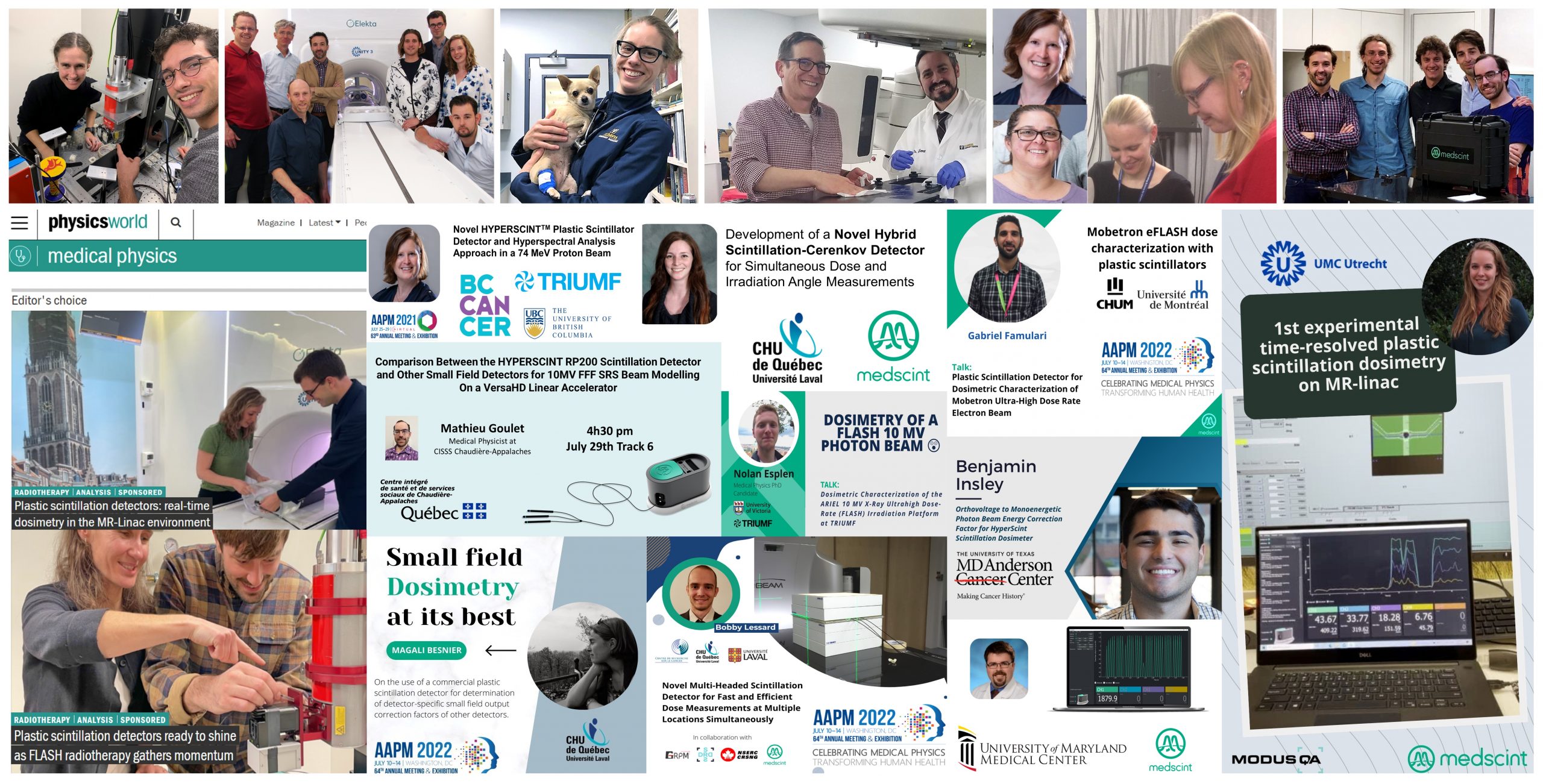The accurate delivery of electrons at FLASH-RT dose rates in radiobiological experiments require new dosimeters that are capable of accurately measuring the radiation dose delivered at >0.55 Gy per pulse (>100 Gy/s) in real-time. The novel HYPERSCINT RP100 plastic dosimeter was able to accurately measure the delivered radiation absorbed dose under characterization and biological experimental conditions, with a higher degree of reliability than conventional radiochromic film. Furthermore, it was shown to directly and accurately measure the number of pulses delivered in real time. This shows potential for use as a real-time in-vivo dosimeter during biological experiments, as well as potential clinical applications.
2021 AAPM ANNUAL MEETING
Y.Poirier (1), J.Xu (1), A.Ahmady (1), S.Mossahebi (1), H.Zhang (1), F.Therriault-Proulx (2), A.Sawant (1) | 1- University of Maryland School of Medicine, Baltimore, MD, USA , 2- MEDSCINT, QC, CANADA
